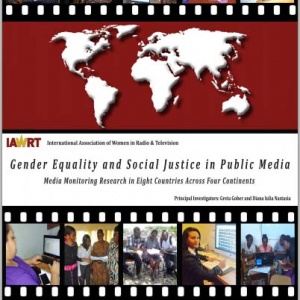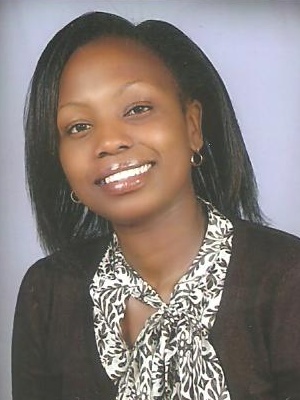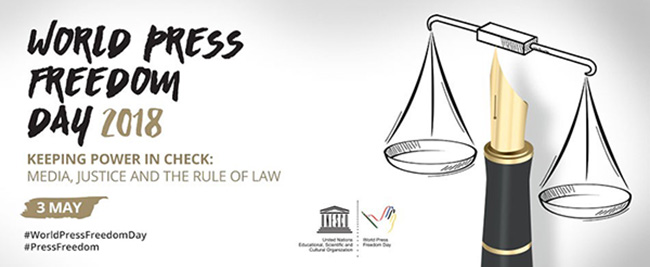Video Editor, Filmmaker
Digital Safety Trainer & Consultant
Nairobi, Kenya
What type of projects do you do?
I edit raw footage of different programs into a sequence that tells a story. I input music, dialogue, graphics and sound effects, consulting with producers from production to the post-production process. Developsuperior skills and expertise in handling computer editing equipment, video switching devices. Organize and assemble video segments to deliver continuous and sequential stories to a specified length
As a digital safety trainer, I conduct training on how to stay safe online. Everything we do is becoming traceable, the websites we visit, who we talk to (and how often) where we have been and what we care about. All this data can be used to make sensitive inferences and predictions about people. Personality traits can be predicted from Facebook likes or phone metadata. And if the recent scandal of Facebook and the Cambridge Analytica company is anything to go by, where millions of people’s personal data was harvested, then digital safety has never been more crucial than now. As journalists it is important we learn how to be safe online. Digital safety is very crucial to journalists as there are times we handle very sensitive information, and we must protect our sources as well as ourselves.
Why did this sort work interest you, and how did you get started?
I remember vividly that I was in grade two, when a television crew came to our school, to record us as we performed dance and poetry. We were later featured in a programme entitled Variety Show, which was aired on Kenya Broadcasting Corporation (KBC), and I was thrilled and fascinated at the same time. This incident aroused my curiosity about television programming, I was curious to know how we managed to fit it in that “small box” called a television. And this where my passion and desire for television production began. After completing high school, I went to pursue film\video production, as I desired to tell stories of people, stories that will not only be interesting but also life changing.
What part of this job do you personally find most satisfying? Most challenging?
First and foremost, I get to do what I love, and it is very satisfying. It gives me an opportunity to be creative. Creativity comes with the job and you find yourself thinking outside the box, working hand in hand with the producer to create a program that will keep viewers glued to their television. Working for the media, gives you an opportunity to network through several organisations, IAWRT being one of them and this strengthens your network; after all your network is your worth.
The media can be quite intimidating especially if you work with a big media house like KBC and the best way to survive to have a thick skin. It is not for the faint hearted.
What do you like and not like about working in this industry?
The media industry in Kenya is very vibrant; we are trail blazers in the African continent. And you get to see that the programs and productions you are involved in are changing people’s lives, they are having an impact on people. That brings a lot of satisfaction.
Media everywhere is going through a lot of change. These changes are being driven by technology and where media channels are becoming more fragmented the media consumer is more empowered than ever before. The audience has moved from being passive to becoming an active audience. Social media has really revolutionized how most audiences are consuming content. And this is a threat to old media, like television.
There are a lot of amazing opportunities in this industry, fellowships, training, workshops, you name it. I have been very fortunate to have been granted several fellowships, for example in the year 2016, I applied for a film production fellowship in New York, to work on the production of the Emmy award winning series The { } And and I was lucky to be selected as one of the fellows. In 2017, I was selected for a coaching and leadership fellowship at the Poynter Media Institute in St. Petersburg, Florida. As fellows we were tasked to each mentor two young people getting into the media industry. In 2017 I was also selected to be a safe sister fellow, a fellowship on digital security conducted by Internews in Washington DC and DefendDefenders Uganda.
The media industry has a lot of opportunities especially for women, one has just to be on the look out for them.
My strongest assets/skills, areas of knowledge, personality traits and values are….
I am an excellent public speaker, very eloquent, and I have a good mastery of language. This has really come in handy when I am doing digital safety training. I am also dependable, whenever I begin an assignment I make sure I see it through to completion, because it’s not how you start, rather, how you finish. I have a great sense of humor I must say I make dull moments a little bit better.
I am a skilled video editor, with over ten years of experience. I am good with most of the editing software, am good at creating content and my greatest strength is my creativity.
I have a Masters in communication studies (which would not have been possible without the generous funding of an IAWRT Scholarship). I’m currently pursuing my PhD in communication studies. Because of my academic qualifications, I have been privileged to lecture part time at the Multimedia University of Kenya, which is a public university. I lecture on television production techniques, concentrating on the technical aspects of production – editing, special effects and camera work. I must say this is a field that is male dominated and hence I have used the opportunity to mentor young women in this field, encouraging them to take up more technical roles.
Has IAWRT’s network of media women around the world helped or inspired you?
IAWRT network is where it all began for me; this year specifically marks ten years since I became a member of IAWRT. When I wanted to join IAWRT I asked the then Kenya chapter Chairperson Rachael Nakitare, “What can IAWRT do for me? And she told me it’s not about what IAWRT can do for you rather what you can do for IAWRT” and that question challenged me and I love challenges, they bring out the best in me, they push me out of my comfort zone. Immediately I joined IAWRT, and I am the current elected Kenya chapter secretary. Through the members I have been inspired over the years to push myself, to keep going, no matter what. When I came into the media my vision was different from the reality on the ground. And it is through the network of the women in IAWRT that I was able to put things into perspective. I have also been privileged to get meet my mentor through IAWRT and she has been a great support in my career
Being a member of IAWRT is more than just belonging—it is not only about what you can get from your association but also what you can give back to the profession.
After IAWRT Kenya worked on research for the Women’s Rights Online, Digital Gender Gap Audit which looked at how many women use the internet, (Kenya report here) I saw that one of the major reasons why women were less online was because of gender based online violence. One of the many things I have learnt through interaction with members of IAWRT is solution-based journalism. Hence, I immediately took the initiative of becoming a digital trainer to close that gap. It was during the one-year SafeSister fellowship that I got to literally learn everything on how to be a digital safety trainer. I am currently in the process of organizing a UX (user experience) training for women journalists. I have also taken up online courses, on https://advocacyassembly.org where they have a lot of great resources on digital security. All this desire for digital security was born out my contact with IAWRT. We are living in a time of unprecedented connectivity, and it is easy to forget that there are dangers out there, on the internet, on social media, in the apps we use every day. The internet is the vehicle of the future and the future is now and we cannot afford for women to be left behind in fear of being harassed online. I am committed to preach the “gospel” of digital safety to the ends of the earth.
What are your long-term goals?
Currently I love what I do. However, my long-term goal is to set up my own production house where I can continue producing programs and films which are centered on social change – programs that bring about capacity building. Through this production house I want to continue mentoring young women in the media, demystifying the idea that the technical aspects of production, like camera and video editing are for men.
Also, I want to venture into consulting work specifically in digital security. My main goal being able to get more women online and training them how to be safe online; Creating safe spaces for women online because unless the most vulnerable feel safe online, the internet will continue to be a male dominated space. Hence, we achieve one Millennium Development Goal.
What special advice do you have for young women seeking to qualify for this type of work?
In this industry it takes passion, zeal and enthusiasm. You must be willing to sacrifice your time and put your best foot forward, because the media industry is evolving every day, with new trends and one must keep up in order to stay on top of the game.
Do you have any special words of warning, or encouragement, because of your experience?
Passion is what should drive you in this industry, not money, because if it is vice versa you are in the wrong place.
links to some of work available online
Environmental Sanitation
The State of Journalism in Kenya
Twisted Love Cecilia
Personal profile
https://ke.linkedin.com/in/cecilia-maundu-33a24b55




 Journalists around the world still face serious challenges and are victims of murder, detention, torture, disappearances, extrajudicial killings along with online attacks and sexual harassment which are overwhelmingly directed at female journalists.
Journalists around the world still face serious challenges and are victims of murder, detention, torture, disappearances, extrajudicial killings along with online attacks and sexual harassment which are overwhelmingly directed at female journalists.






